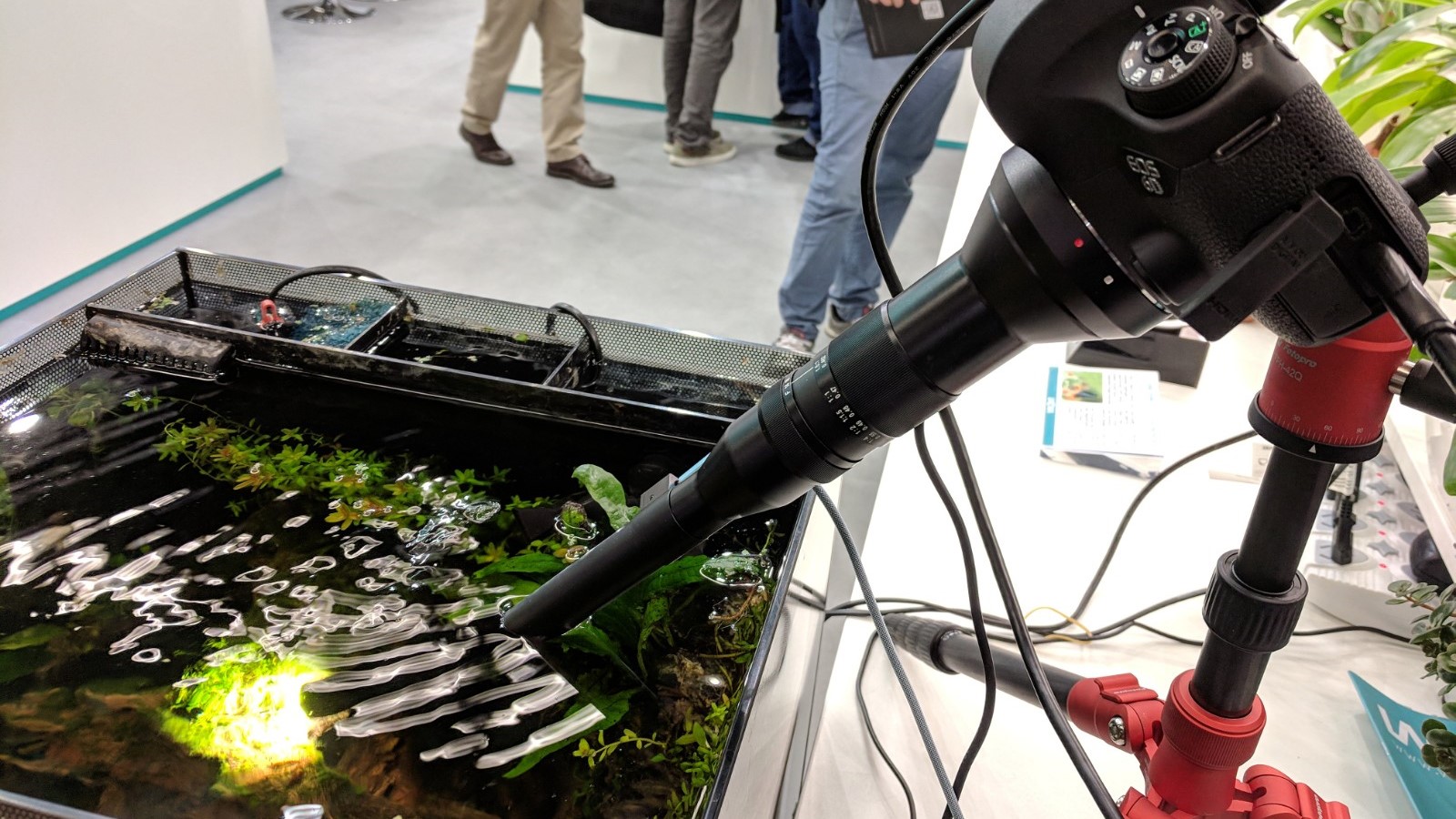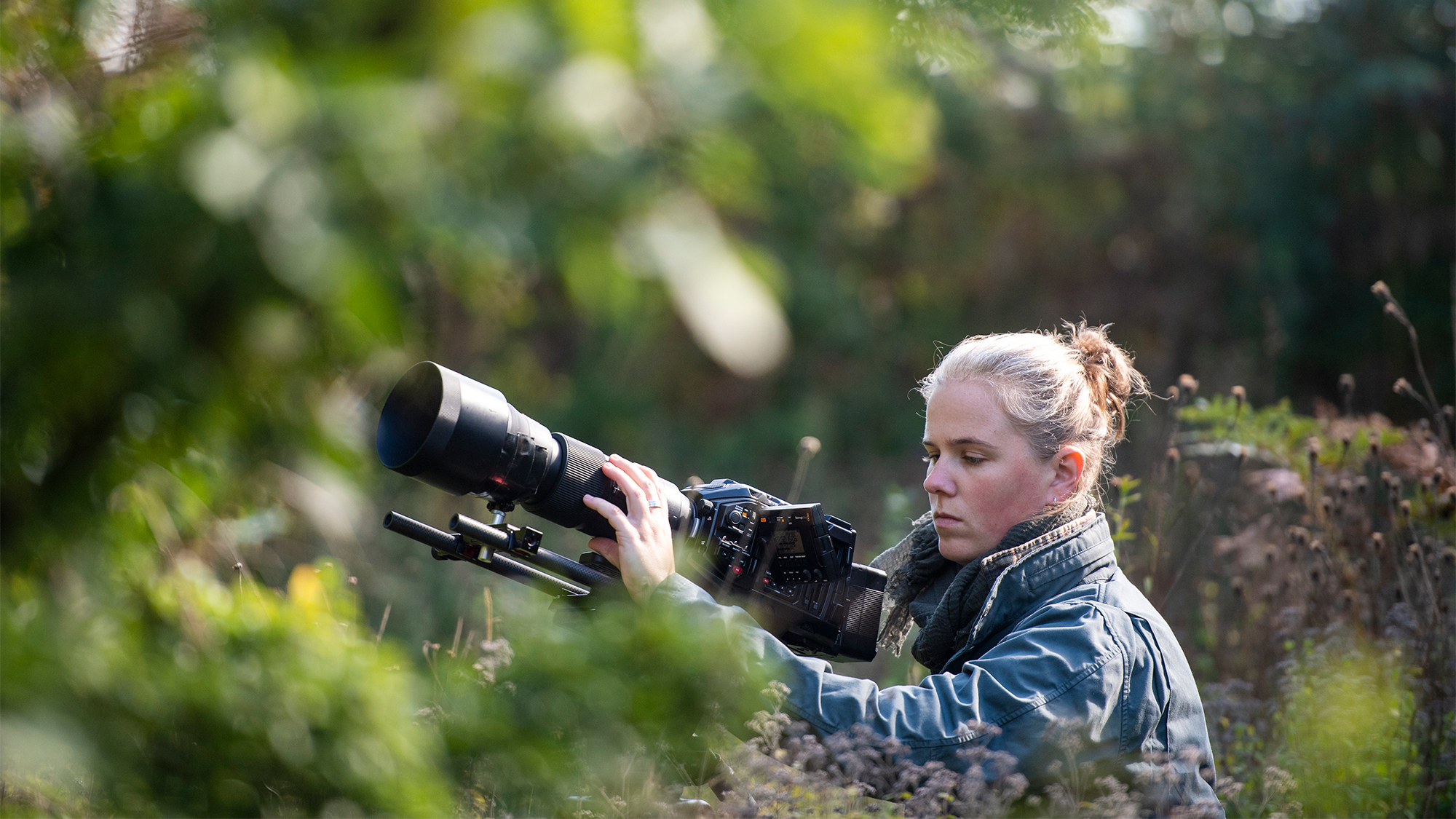What's in my bag: pro wildlife photographer Katie Mayhew
We chat with pro wildlife photographer and videographer Katie Mayhew about the kit she uses and why she loves Blackmagic

There is no right answer when it comes to choosing the right kit. What works for you might hinder someone else and vice versa, it really all comes down to what you're shooting and what your preferences are.
Wildlife photographer and videographer Katie Mayhew is a veteran in her field and during her time working for the BBC, Channel 4 and Netflix, she would've used a wide variety of different kit. Her current preferred setup however includes the powerful Blackmagic URSA Mini Pro 4.6K G2 camera - a video focussed cine camera with 15 stops of dynamic range, a super 35mm 4.6K sensor and the ability to shoot 2K at up to 300fps which is super slow motion.
Accompanying her main camera, Katie shoots with an array of fast Canon lenses and Sigma lenses plus a Laowa probe lens for those close-up macro shots in hard-to-reach places.

Katie Mayhew is a veteran wildlife photographer and videographer. Starting her career with Silverback Productions, she has produced content for Netflix, the BBC, Disney Nature, Channel 4, and Apple TV. Her projects have ranged from uninhabited islands off the coast of Mexico to filming forest fires in California – as well as closer to home, shooting a variety of wildlife and macro productions.
1. Blackmagic URSA Mini Pro 4.6K

This is my workhorse camera; it’s been everywhere with me and endured a lot. I love that it’s versatile – I can use it without a viewfinder, and over- or under-sling it without having to re-rig. The camera body is nearly vertically symmetrical to the center of the sensor so I can achieve very low-angle shots when under slinging the camera.
The built-in ND filters are brilliant, they mean that I don’t have to change external filters when the light levels change. I’m looking at trying the URSA 12K as well at some stage, and the common interface will make the change easier.
Looking for the best BlackMagic cameras?
2. Sigma Art 50mm f/1.4
I’ve been shooting most of my forthcoming documentary, 15 Years, on this, and it’s got a really nice focal length, a very shallow depth of field and creates a sharp, abstract images very easily. All of that makes it perfect for shots of people – 15 Years is about David Plummer, a Natural History Photographer and Filmmaker with Parkinson’s Disease. The film aims to inspire others with disabilities, showing that filming the natural world can be an accessible career choice or hobby.
The best camera deals, reviews, product advice, and unmissable photography news, direct to your inbox!
3. Canon EF 100mm f/2.8 L Macro

This is my all-time favorite lens; even at F32 it’s still got a nice shallow depth of field, and being a macro lens you can film extremely close-up with great bokeh. The strangest-looking insects look brilliant with a glossy, out-of-focus background (even leeches … more on those later!)
4. Canon EF 16-35mm f/2.8 L III
This is a really solid, standard establishing lens – it’s my ‘jack of all trades’ lens, with a relatively good minimum focal distance. This means that you can get fairly close up to animals, but without losing the environment behind them, which is crucial for a lot of nature films, to set the scene. It is also rather sharp.
5. Laowa 24mm f/14 macro probe lens

This lens has a really small front element, so you can get right down to the level of an insect or inside a hole. I tend to put it on a slider and get a bug’s eye view, sliding between individual blades of grass – it looks absolutely amazing. The only downside is that it’s F14, so it does need quite a lot of light for the best possible look.
6. Sigma 150-600mm F5-6.3 DG OS HSM

This is my go-to, affordable wildlife lens. It’s versatile, lighter than a lot of cinema lenses and five to ten times cheaper. It does need quite a lot of support, but that’s very normal for long telephoto lenses!
7. Miller 3155 Arrow X7 Tripod
This is essential for supporting long lenses like the Sigma Telephoto. It’s got a great fluid head, and is relatively light, which is great when you have to carry a whole kit bag a long way!
8. Camouflage Rain Cover
Essential in both the UK and Borneo! This has been designed for long lenses and fits the URSA really well – it’s completely waterproof and hooks over the camera and fits underneath the tripod really well. It’s also good if you need somewhere to sit and eat your sandwiches.
9. Leatherman
Leatherman: I couldn’t be without my multi-tool, although it’s usually the first thing to go missing. I’ve had a few occasions where I thought I’d lost it, only for it to re- appear in a completely different bag or pocket. As well as a lot of conventional stuff, I’ve had to use it for prying leeches off my skin in the jungle in Borneo; if you use your hands, they just transfer to the other hand!
You might also like to read: Blackmagic 12K or 4.6K cinema camera for $5,995? I know which I'd go for! and to find out about the best cinema cameras.

Having studied Journalism and Public Relations at the University of the West of England Hannah developed a love for photography through a module on photojournalism. She specializes in Portrait, Fashion and lifestyle photography but has more recently branched out in the world of stylized product photography. Hannah spent three years working at Wex Photo Video as a Senior Sales Assistant, using her experience and knowledge of cameras to help people buy the equipment that is right for them. With eight years experience working with studio lighting, Hannah has run many successful workshops teaching people how to use different lighting setups.
- Lauren ScottFreelance contributor/former Managing Editor
